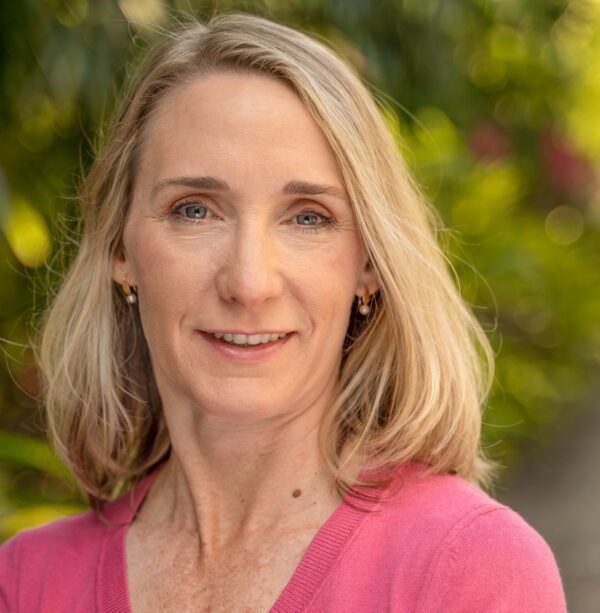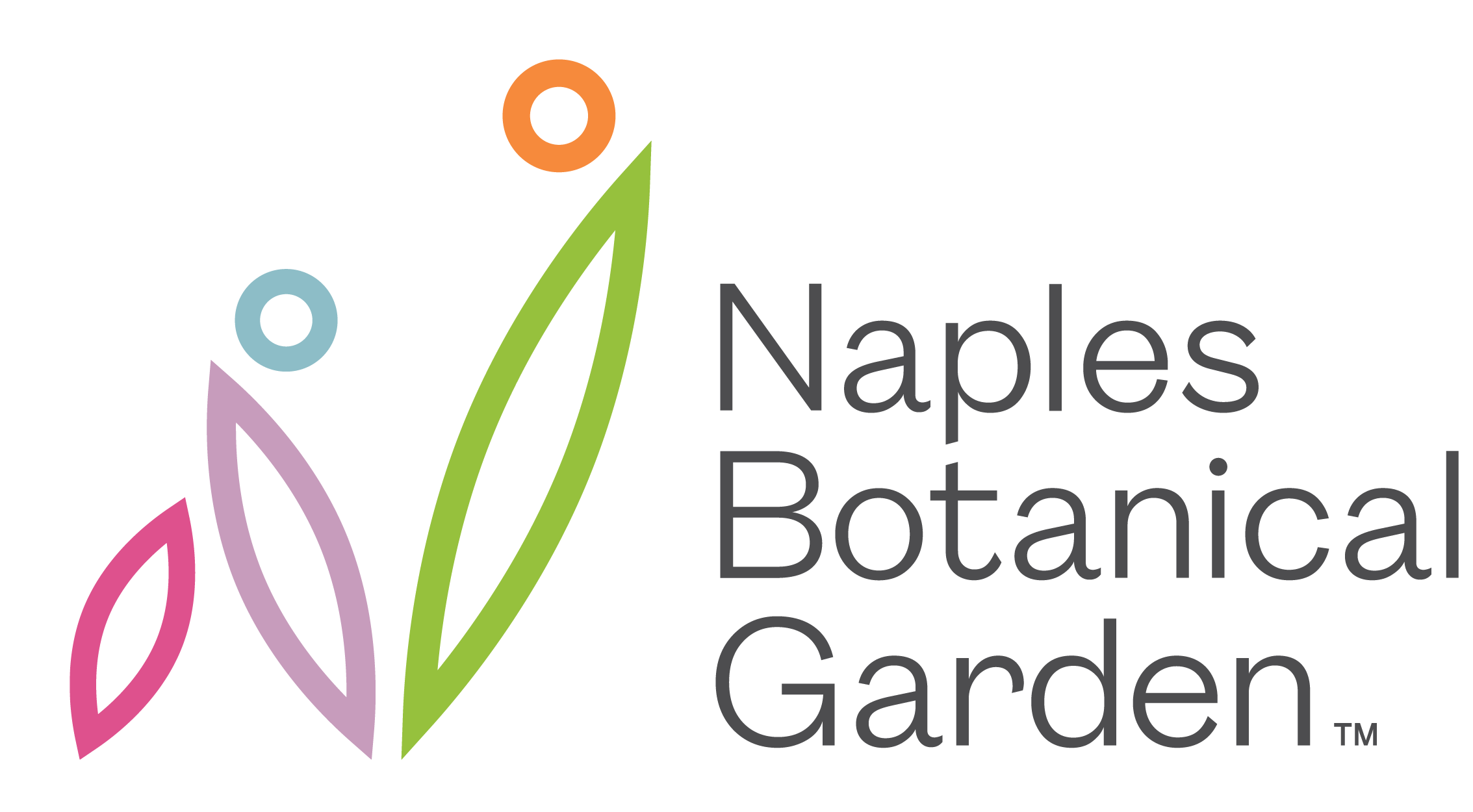
Artist Tanya Trinkaus Glass isn’t afraid to reinvent and reimagine. What will she come up with next?
When you enter Kapnick Hall to view Eternally Curious: A Journey of Creation and Growth by Tanya Trinkaus Glass (April 26 – June 29), you’ll be forgiven if you mistake this solo show for a group exhibition.
The compilation includes Tangles Twisting, an abstract palm tree encircled with ribbon-like bromeliads; Stalwart, a true-to-life depiction of a bare-branched pine; Brazilian Jazz, a riff on the Kapnick Brazilian Garden, blaring with color; Orchid Stance, a black-and-white pastel, a departure from the artist’s typical vibrancy.
“It’s all about new discoveries,” Glass explains of her impossible-to-pin-down style.
Glass certainly isn’t the only artist to re-invent herself over time—famously, Picasso, the father of cubism, started as a realist—but she is unique in her incessant shape shifting. At her home studio in Naples, she works on as many as three pieces at a time, wildly divergent in theme, approach, genre, and medium.
Nevertheless, there’s a constant that defines Glass’ approach.
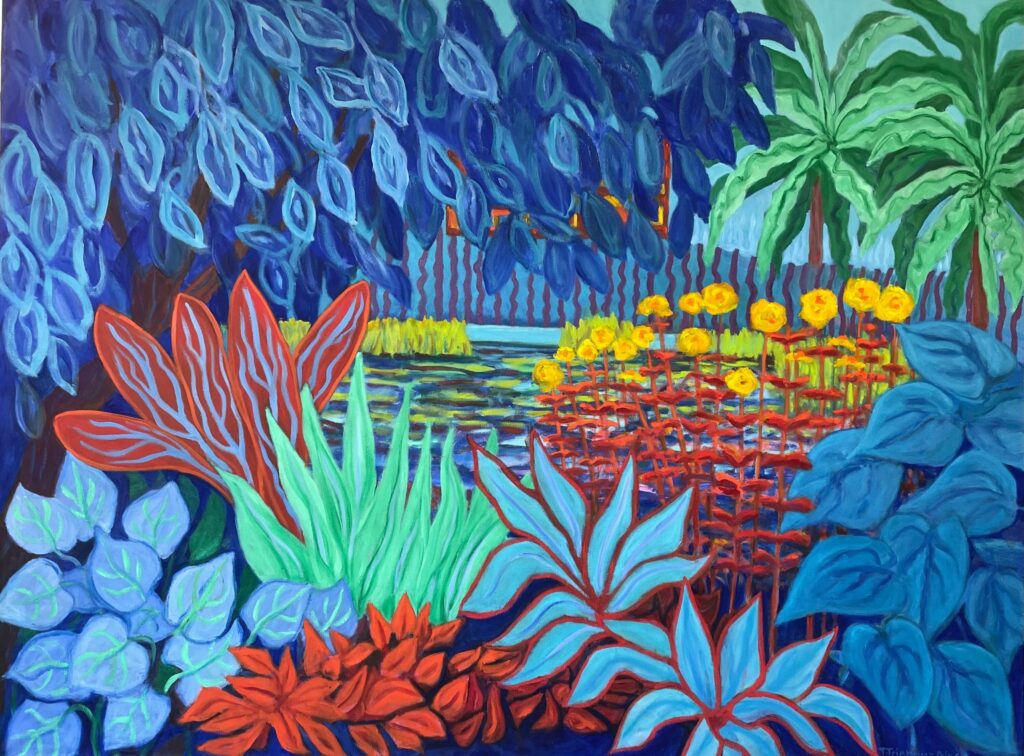
The artist loves to experiment, thriving on the unpredictability of the new and the untested. She might squeeze never-before-tried color combinations onto her palette or try a subject in a new medium or paint from her mind’s eye rather than her literal one.
“If you don’t try things, you’ll get bored,” she says with a playful smile. “Well, at least I do.”
Glass, who’s been creating since she was “old enough to hold a crayon,” still sees the world with the same curiosity, wonderment, and creativity that defined her New England childhood. Her career was inspired, in part, by her artist mother and scientist father who modeled experimentation and risk-taking.
Glass, though, would carve her own distinct path. “I was always known as the artist who would try anything,” says Glass. A favorite instructor, painter Tom Sgouros, challenged her to ask, “What if …” and reimagine her subjects over and over. Decades later, she continues that practice. “Trying new techniques makes it more fun, no matter the medium, and more interesting,” she says.
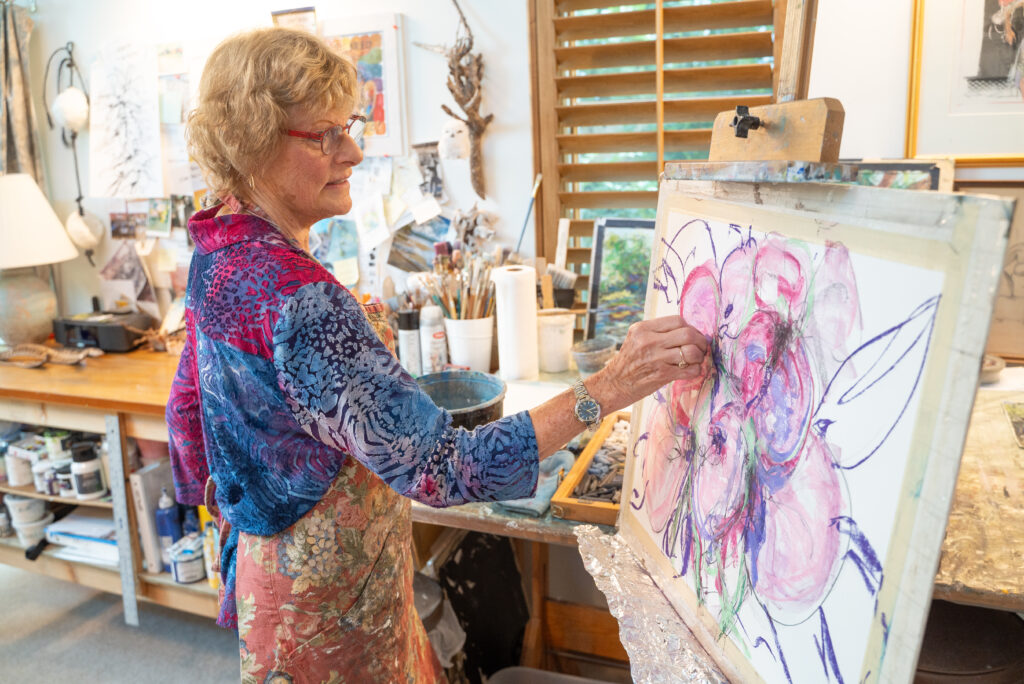
To demonstrate, the artist grabs a pastel chalk and makes sweeping arches on a blank sheet of paper. She periodically glimpses a lavender Phalaenopsis set on a nearby table but uses it only as a reference. The flowers that materialize are bold rather than delicate, vivid rather than translucent. They are a lot like her.
If Glass doesn’t like the result, she destroys it, paints over it, rips it up for a later collage, and chalks it up as a learning experience. “I am not afraid to fail in my art efforts,” she says. “It’s a liberating attitude.”
“There’s just so much to do, to try, to learn,” Glass says, “and so I keep at it. I keep creating.”
Before Glass branches into abstraction, she studies and captures her subject’s real-life intricacies. A trio of palms hanging on her studio wall exemplifies this: She faithfully re-created the scene, focusing on the spectrum of browns and greens, the curvature of the trunks, the slant of the shadows. Once she knows a subject well, she diverges from the factual to the fantastical. She points to a different landscape, a patch of hardwoods, represented in whimsical pinks, yellows, and greens.
“The more familiar you become with a subject, the looser you can become,” Glass explains.
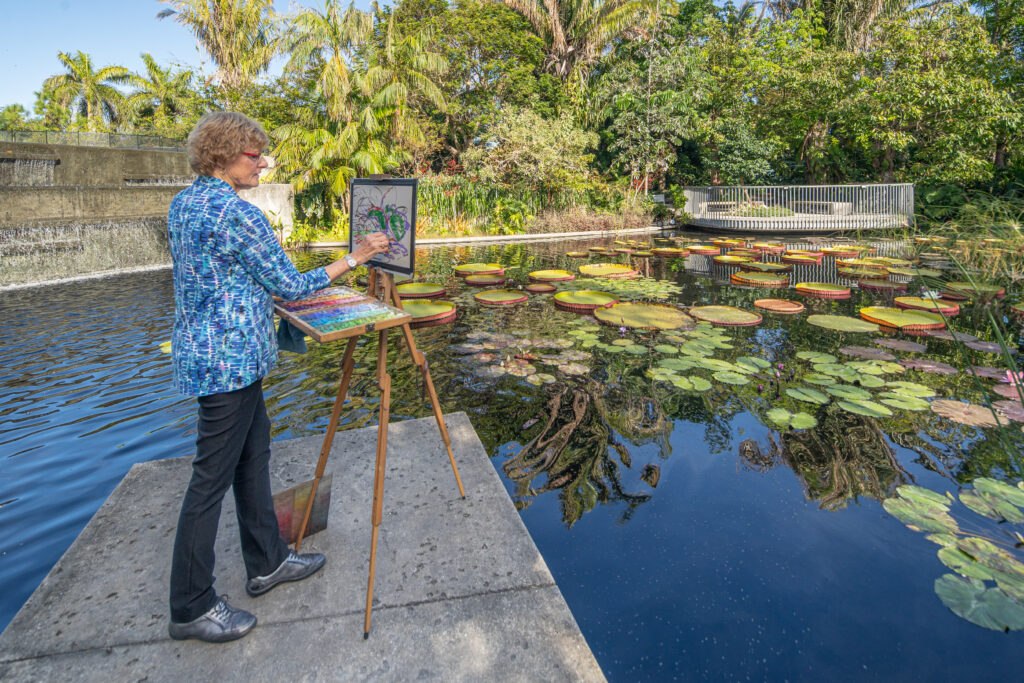
Regardless of genre or degree of abstraction, she stays true to certain artistic principles. She generally sketches before she paints, grounding her work in form, perspective, and balance no matter its outcome. Eternally Curious viewers will be able to trace the evolution of selected works by scanning QR codes that link to earlier iterations.
Her mood, or “creative zone,” also influences what emerges. If she’s uptight, she works on details with small brushes and short strokes. She expresses anger through heavy-handed charcoal markings. On a more jubilant day, her arms sweep, dance-like, across the canvas.
Glass studied art, fashion, and art history as an undergraduate, married young and had two children. She earned a master’s degree in library science and worked as a librarian for a dozen or so years, creating within her a unique dichotomy of rigorous structure and freeform expression. She took additional art classes between work and parenting, studying techniques such as acrylics, oil paints, watercolors, and pastels, hoping she might discover her preferred medium. She never did. Fluidity became her artistic trademark, and she relishes her ability to move between mediums and styles.
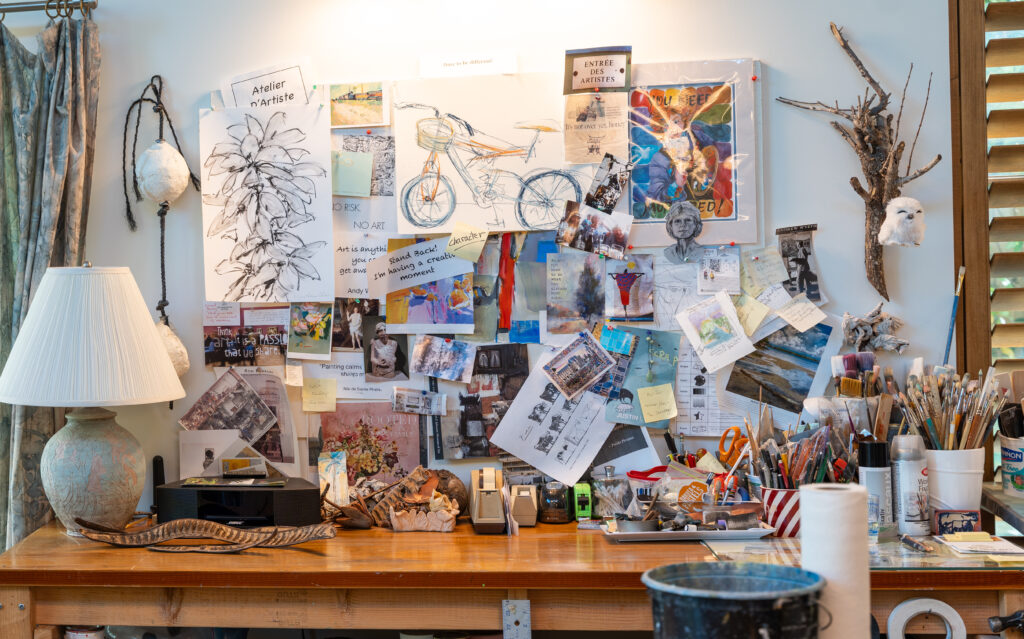
“I have all these ideas, and I just don’t have enough time to do them,” she says. She releases her pent-up energy through her art and her garden, another passion. She tends it almost daily; the cultivation of tropical foliage helps her internalize the shape and structure of the plants she’ll later paint.
Our Garden is a muse that she visits frequently, sketchbook, easel, or cellphone camera in hand. She’s lived much of her life outdoors and harbors a deep reverence for nature and a commitment to its conservation. “Exhibiting at Naples Botanical Garden is a special honor to show this reverence and love for nature,” she says. “I have been inspired over and over to paint wonderful artworks—expounding on all the options, all the colors, all the greens, all the shapes of leaves and all the secret spots,” she says.
Although Eternally Curious: A Journey of Creation and Growth is meant to chronicle Glass’ artistic evolution, it is not a retrospective. On her drafting table lies a collage inspired by the Garden’s Lotus Pool, unfinished, as she experiments with techniques to complete it. A work in progress—like the artist herself.
“There’s just so much to do, to try, to learn,” Glass says, “and so I keep at it. I keep creating.”
This article originally appeared in the Spring 2025 issue of Cultivate, the Garden’s magazine.
